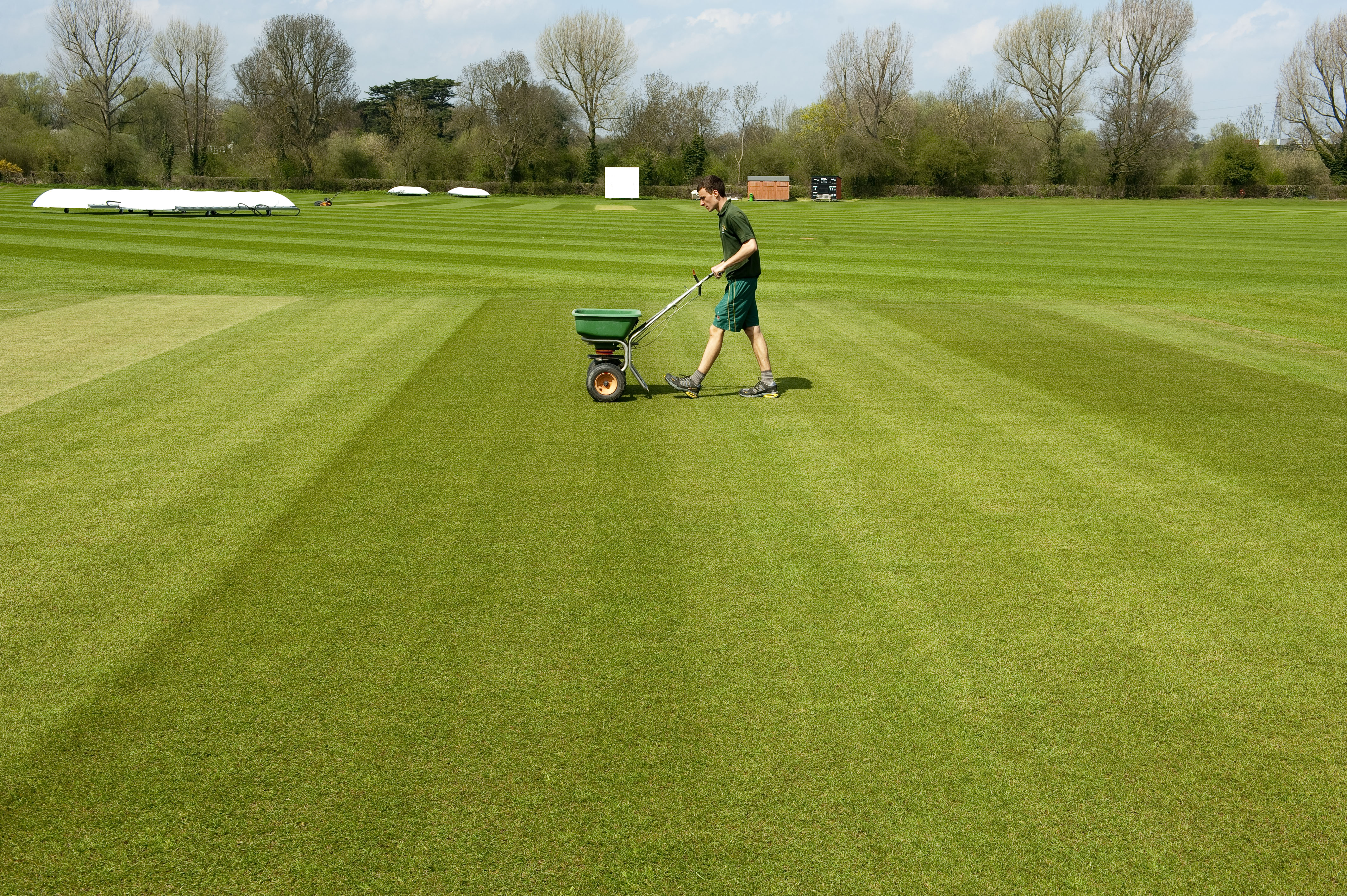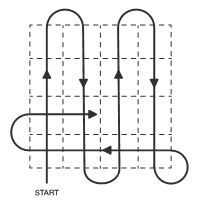Fertiliser programme
This is essential to ensure that the grass plant remains healthy and strong for the following season.
Fertiliser may be applied to maintain the health of the grass and appearance of the cricket ground. It is best to apply fertiliser when the immediate surface is free from damp but there is still some moisture in the soil.
Avoid dry, frosty, or windy conditions - as these often result in uneven distribution and possible scorching.
Always check the calibration of the machine before fertiliser applications to ensure that the spread rate is correct, follow manufacturer’s instructions.
- This provides one or more essential plant nutrients to aid growth and health and can be applied to the turf surface or rootzone.
- A low nitrogen, low phosphorus but higher in potassium is a typical fertiliser used during the winter months – this helps to prevent diseases forming in lush, damp cold grass that is difficult to cut. The potassium helps to strengthen the structure of the plant, this can be helped further with the addition of iron, which when applied as iron-sulphate can also help to control moss growth. Often such fertilisers are marketed as ‘Winter Feed’ or similar. If you are in any doubt – speak to your fertiliser supplier and always follow the label recommendations.
- Always follow the label recommendations, particularly on application rate. Remember it is about the amount of fertiliser you put on, as much as the nutrient quantities (percentages) of the fertiliser. Two bags of 5:5:10 will put on the same amount of nitrogen and other nutrients as one bag of 10:10:20 over the same area. Also make sure that you are applying it evenly. A quick calculation to work out your area is:
Area (m2) =Number of Pitches x Width of a Pitch (m) x Length of the Square (m)
- If you struggle with uniformity of application in a single pass you can apply your fertiliser in two doses at half target rate, at 90 degrees to each other – that way you often reach full target rate more evenly.



 Tweet
Tweet